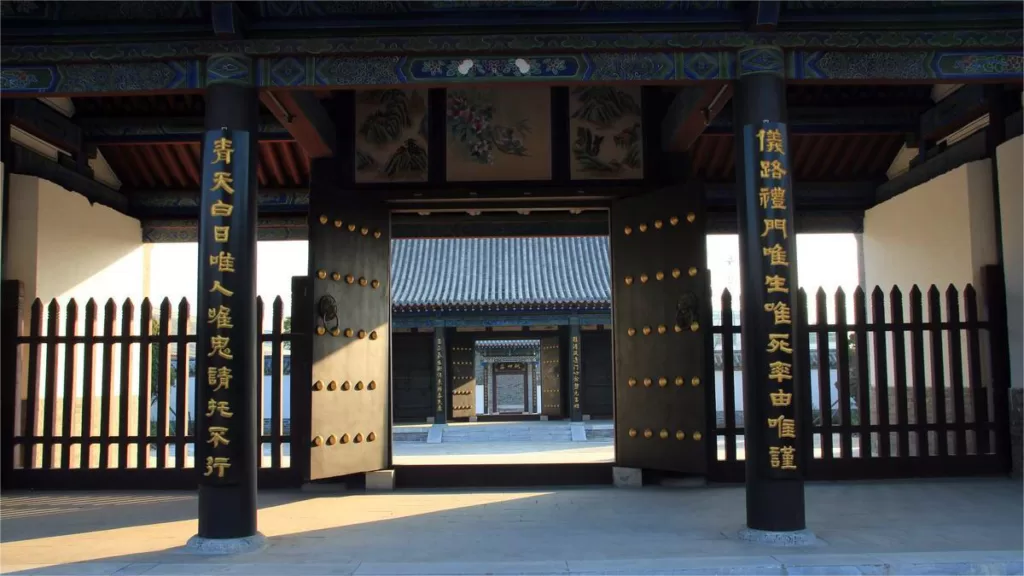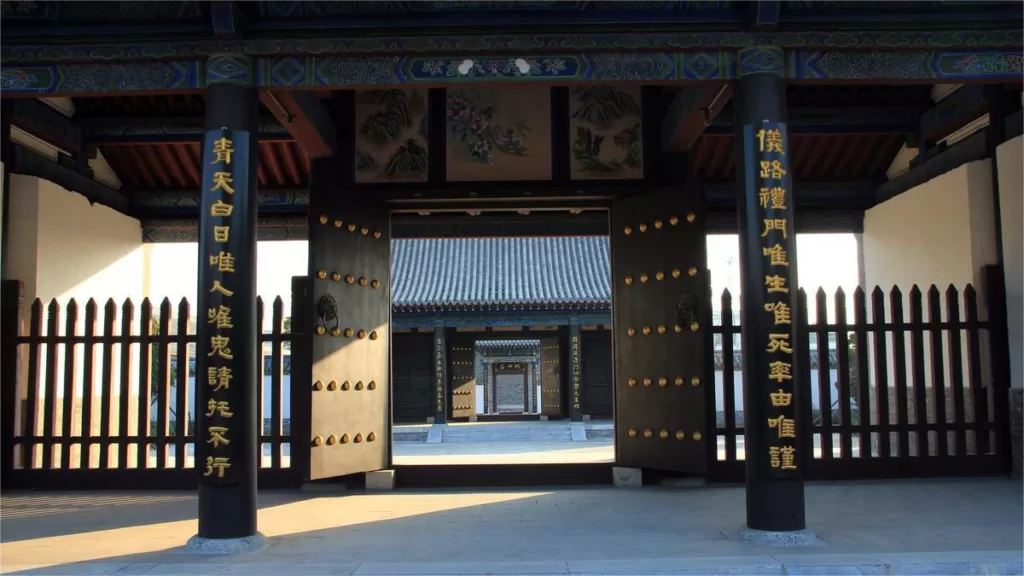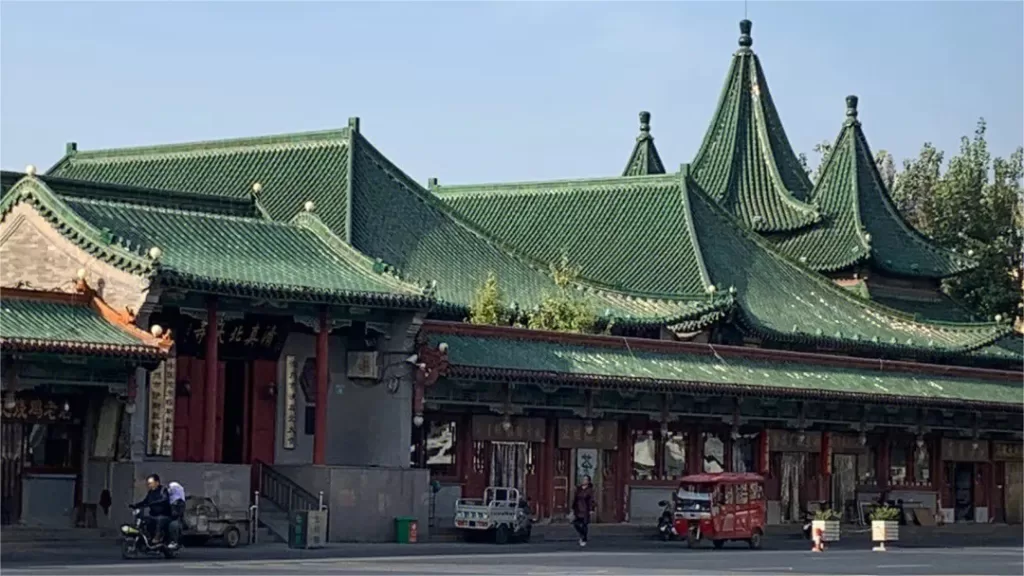Antikes Regierungsbüro von Hejian - Ticketpreise, Öffnungszeiten, Lage und Highlights


The Ancient Government Office of Hejian (河间府署), located in Hejian City, Cangzhou, Provinz Hebei, China, is a historical treasure that has earned the title of “The Premier Office of the South of the Capital” throughout its long and illustrious history. With a legacy spanning an astonishing 804 years from the establishment during the Northern Song Dynasty to its abolition during the Xinhai Revolution, this government office played a pivotal role in the governance and administration of the region. Notably, one of China’s most esteemed statesmen, Bao Zheng, once served in this institution during the Northern Song Dynasty.
Inhaltsübersicht
- Grundlegende Informationen
- Standort und Transport
- Highlights of the Office
- Altes Regierungsbüro von Hejian
- Andere Attraktionen in Cangzhou
Grundlegende Informationen
| Geschätzte Dauer der Tour | 1 - 2 Stunden |
| Ticketpreis | 40 RMB |
| Die Öffnungszeiten | 8.00 – 17.30; Last admission: 16.45 |
| Telefon Nummer | 0086-0317-3651088 |
Standort und Transport
The ancient government office of Hejian is located at 97 Hongpailou Street, Hejian City, Cangzhou, Hebei Province, China. To reach this historical site, you can board Bus No. 1. Alight at the Xinyongshe (信用社) station on North Avenue (北大街). From there, it’s a short walk of approximately 420 meters.
Highlights of the Office
Exhibition Areas
Covering an expansive area of over 5,000 square meters, the site is divided into six major exhibition areas, each dedicated to different aspects of Hejian’s historical development.
- Historical Evolution Exhibition Area: This section provides visitors with an insightful journey through Hejian’s rich historical evolution, tracing its development from ancient times to the present day.
- Governance and Culture Exhibition Area: Here, the focus is on the governance and cultural aspects of Hejian’s history. It showcases the bureaucratic systems and cultural influences that shaped the region.
- Poetry and Literature Exhibition Area: This exhibition area celebrates Hejian’s contributions to poetry and literature, highlighting the region’s literary heritage and the works of famous poets and writers who hailed from Hejian.
- Ancient Legal Systems Exhibition Area: Delving into the legal systems of the past, this area explores the ancient laws and legal practices that governed Hejian during different dynastic eras.
- Temple Culture Exhibition Area: Hejian’s rich religious history is brought to life in this section, where visitors can explore the temple culture and religious practices that have thrived in the region.
- Integrity and Ethics Exhibition Area: Focusing on the values of integrity and ethics, this exhibition area showcases the importance of moral conduct and ethical standards in Hejian’s history.
The Entrance and Gate
The architectural layout of the Ancient Government Office of Hejian is designed with precision and significance. The main government office building faces north to south, with a prominent screen wall known as the “zhao bi” (照壁) erected in front. Flanking the zhao bi are two gatehouses, and beyond them, a straight path, known as the “yong lu” (甬路), leads directly to the east-west main street of Hejian. Facing the street stands a grand wooden archway adorned with the inscription “燕赵雄风” (Yan Zhao Xiong Feng), which translates to “The Mighty Spirit of Yan and Zhao,” paying homage to the region’s historical significance.
The Gate House
Upon entering the government office compound, the first building encountered is the gatehouse, which also serves as a reception area. This space is adorned with flags and banners and is flanked by residential quarters for junior officials. Further inside, one finds the ceremonial gate, which leads to the eastern and western administrative offices where clerks and officials conducted their duties. To the east, there is a “shen ming ting” (申明亭) pavilion, while to the west stands the “jing shan ting” (旌善亭) pavilion.
The Courtyard
Passing through the ceremonial gate, visitors find themselves in a spacious courtyard flanked by ancient cypress trees that reach for the sky, creating a serene and picturesque atmosphere. To the west, a large bronze bell hangs, bearing inscriptions and once containing a thousand taels of silver. Its resounding chime could be heard from miles away, but during the invasion by Japanese forces, it was plundered and taken away.
The Grand Hall
The centerpiece of the government office is the grand hall, where official matters and legal cases were adjudicated. Interestingly, in an effort to maintain transparency and display the fairness of their judgment, officials allowed the general public to attend and observe proceedings. On either side of the grand hall, there are chambers for officials to rest and change, ensuring they were prepared for their duties.
In front of the grand hall stands a pavilion known as the “jie shi ting” (戒石亭), upon which an inscribed stone monument bears the message: “尔俸尔禄,民膏民脂。下民易虐,上天难欺” (Your salary, your position, come from the people’s taxes and resources. It’s easy to oppress the common people, but it’s difficult to deceive heaven above). This inscription emphasizes the responsibility and accountability of officials towards the welfare of the people they served.
Altes Regierungsbüro von Hejian
Andere Attraktionen in Cangzhou

Beida-Moschee

Nandagang Feuchtgebiet

Wuqiao Akrobatik Welt

Der Eiserne Löwe von Cangzhou
Cangzhou Attraktionen, Historische Stätten in Hebei, Hebei-Museen